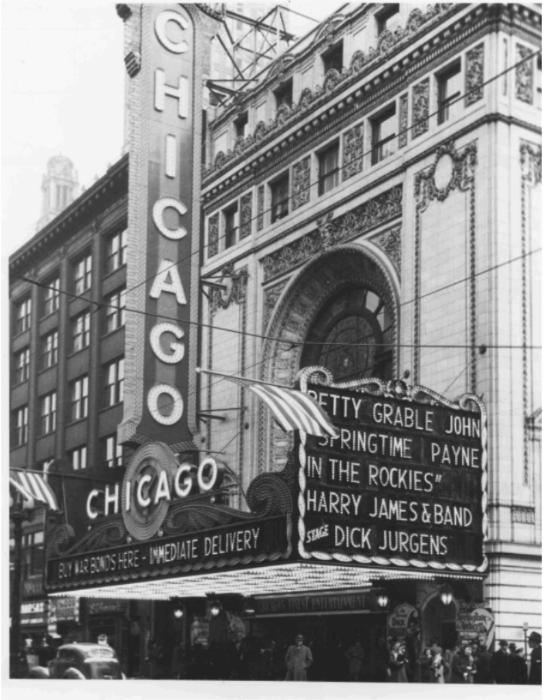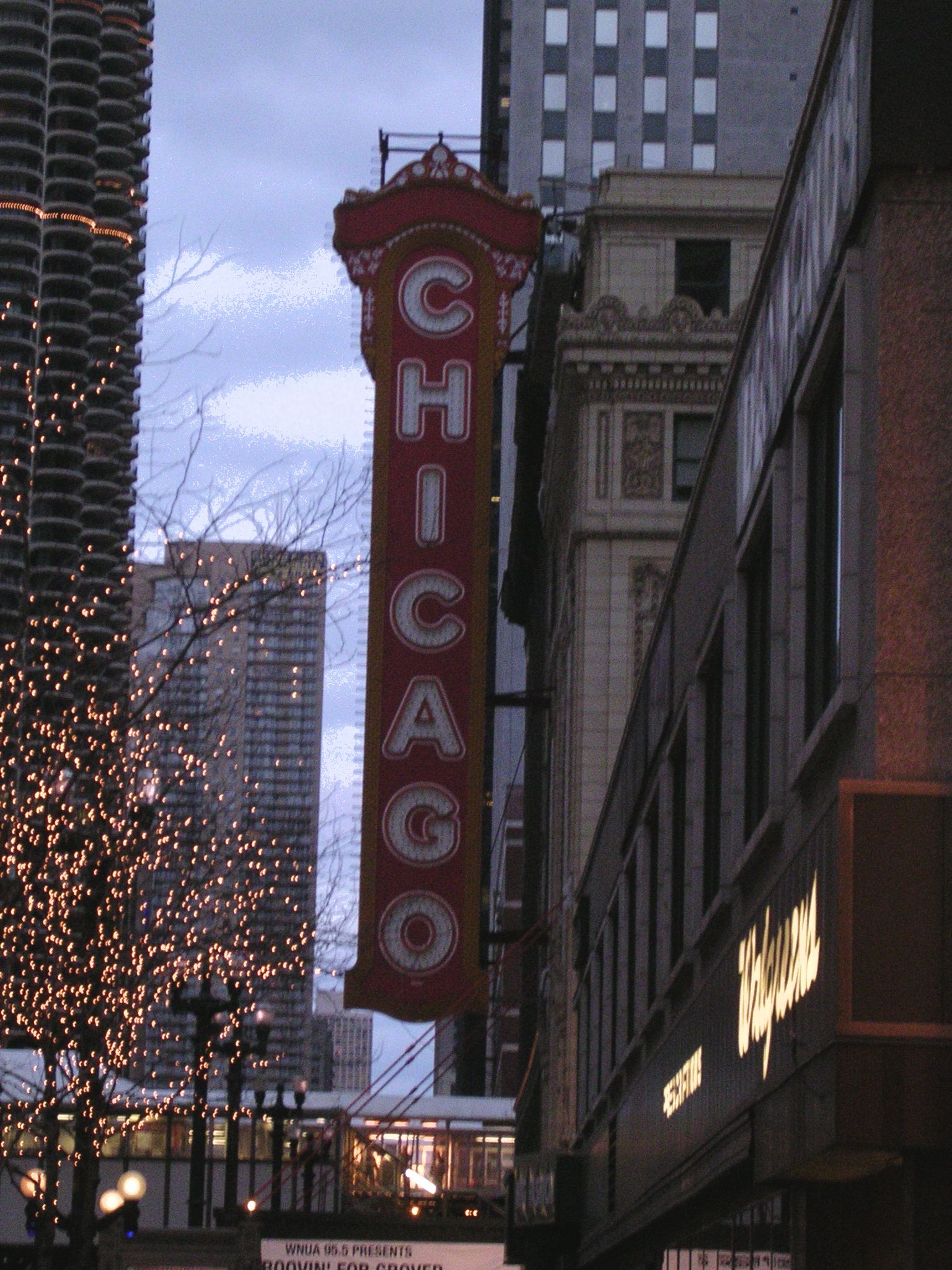Background Facts
Official Opening: October 26, 1921
Architects: C.W. and George L. Rapp
Opening Feature: "The Sign on the Door"
Number of Seats: 3,000
Interior Design: Marshall Field and Company
Design Influence: French, Louis XIV
Location: 175 N. State Street

"It is in the interior that the full expression of architectural splendor and fantasy is realized. The Chicago Theatre is a miniature Versailles, and like Louis XIV, Balaban and Katz spared no expense on its workmanship and materials." (10)
The grand opening of this "motion picture palace" (11) was a significant addition to Chicago. Even if people couldn't attend the grand opening, they made sure to pass by the theatre on their way home from work that night. This was the first theatre constructed in the Loop that provided the audience with the marvels of the projector, which George Spoor introduced to the stages. The typical program of the performances at the Chicago Theatre contained a little bit of everything - movies, musicals, and concerts. The main stage was not the only place for action in the theatre. In the penthouse of the building was a smaller theatre called the "Little Chicago." This was the try-out theatre, where films would be previewed before moving to the main stage. Just as the Auditorium Theatre provided a grand landmark for the city, the Chicago Theatre became a new symbol for the city and its people. The French style, particularly that of Louis XIV, was the inspiration for the magnificent architecture - both inside and out. The beautiful arch around the circular stained-glass window and the minute architectural designs on the facade of the building, resemble France's Arc de Triomphe. Surrounding the vertical sign are hundreds of lightbulbs, and when illumiated at night, they resemble France's City of Lights. While this vertical sign is still the original, the horizontal sign has been reconstructed multiple times. Both of these signs, however, serve as a symbol for State Street, a popular street in Chicago holding many historical landmarks. The interior design, using Baroque and classical motifs, is just as ornate as the outside of the building. The interior resembles a miniature Versailles, with elaborate murals adorning the ceiling. The murals depict allegorical figures, such as Apollo in his horse-drawn chariot. (12) Adding to the magnificence of the ceiling is the stage, containing both an orchestra pit and an original Wurlitzer pipe organ.

To reflect the changing times taking place in the city, the theatre has undergone two major renovations. The first renovation took place in 1933 as the city was preparing for the Century of Progress Exposion that year. During this renovation, which only affected the interior of the building, the theatre was redecorated with new carpeting, draperies, and upholstery. The second renovation took place between 1949 and 1950. Many of the original decorations were replaced, including the Louis XIV inspired furniture. This provided the theatre with a refreshing new apperance for its interior.
Even though the interior of the theatre has undergone many changes, the theatre's exterior and quality of productions on stage still reflect what people saw when the theatre first opened.